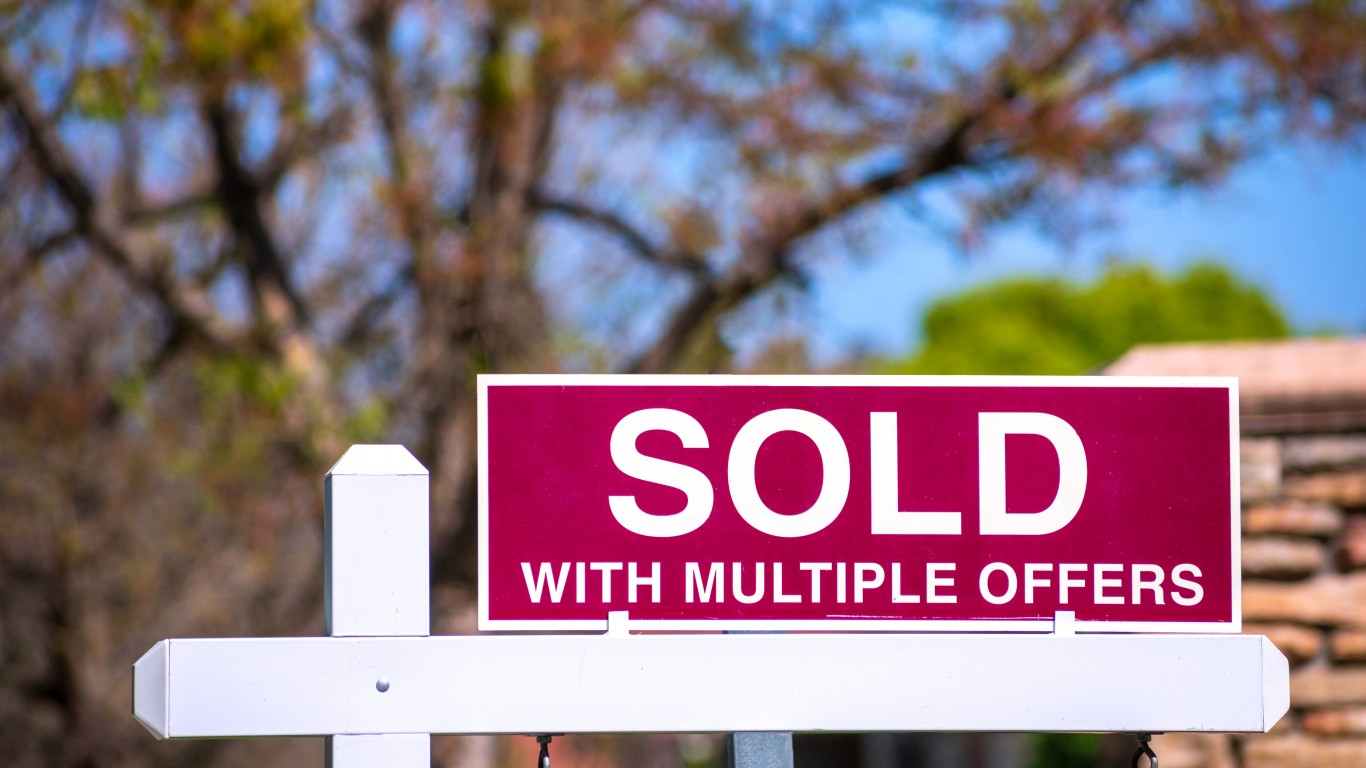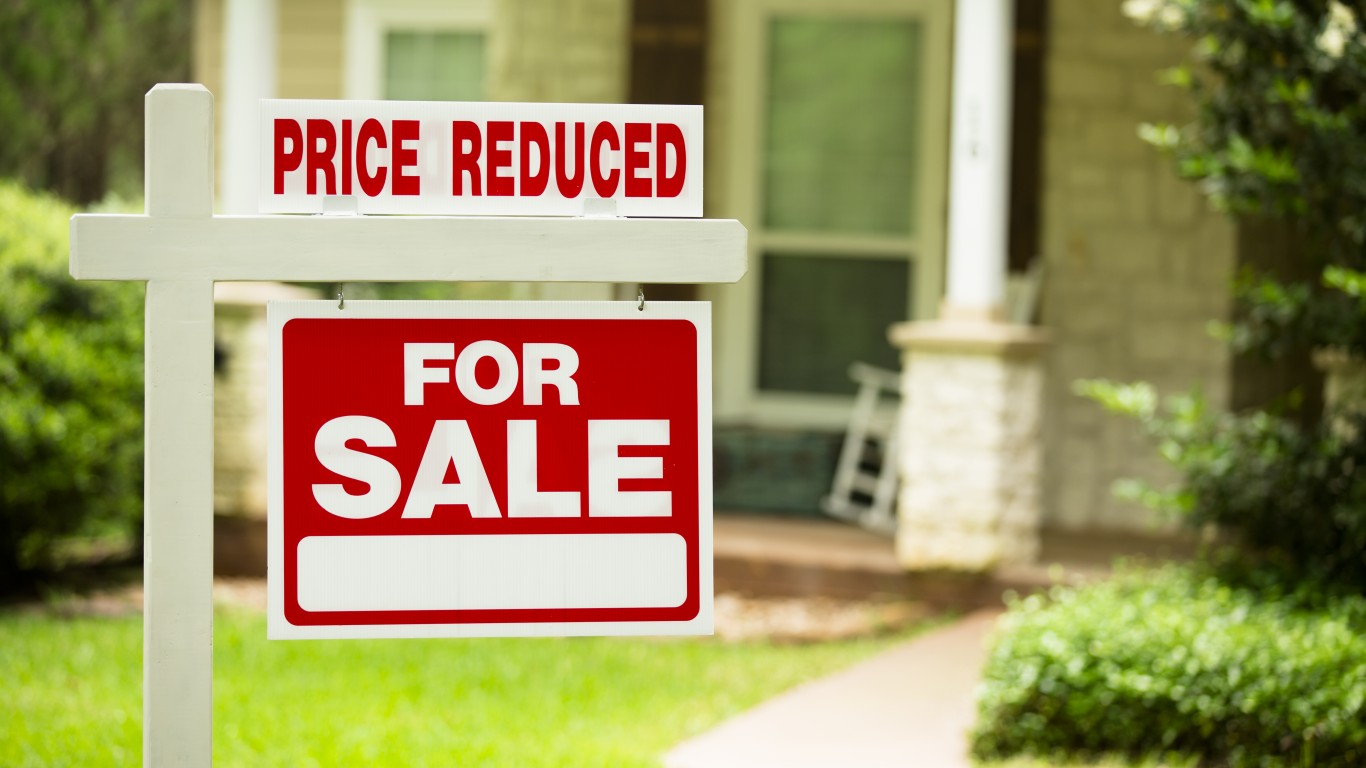
There’s a saying that growing old is not for the faint of heart. For most people incomes decline and health problems increase.
That potent combination can make growing older a difficult time for Americans and where we choose (or are essentially forced) to live can have a significant impact on our so-called golden years.
Based on relatively material indicators, including health, labor markets, amenities, and access to medical facilities, elderly populations in some states are better off than in others. The typical elderly household earns $40,971 annually, and only about half of people 65 and over report having retirement income such as pension payments and 401k withdrawals in addition to Social Security.
Circumstantial factors such as weather preference and the presence of friends and family also play a major role in the quality of life for elderly residents.
Growing old can also differ substantially between states. We recently ranked all 50 states in four broad categories related to the issues that Americans face as they age: income, health, education, and environment.
Here are the 10 worst states for growing old.
Mississippi
> Pct. of pop. age 65 and up: 14.7% (21st lowest)
> 65 and over poverty rate: 12.5% (2nd highest)
> 65 and over bachelor attainment: 19.6% (5th lowest)
> Life expectancy at birth: 74.8 years (the lowest)
Mississippi routinely ranks as among the worst states in a range of socioeconomic and health measures, and elderly residents are not exceptional in this regard. The typical elderly household has an annual income of $31,744, the lowest of all elderly state populations. The challenge of living on such low incomes is alleviated somewhat by the state’s relatively low cost of living. Goods and services cost 13.3% less in Mississippi than they do on average nationwide, the lowest cost of living of all states.
Compared with the vast majority of U.S. states, Mississippi’s elderly residents are not healthy. Close to 5,000 deaths are recorded for every 100,000 state residents 65 and older in a given year, the highest mortality rate of all states and a strong indication that premature death is not uncommon in the state. Further, like many states towards the lower end of this list, the percentage of older Mississippians who report some form of disability, at 42.6%, is well above the national percentage of 35.4% and second highest of all states.
West Virginia
> Pct. of pop. age 65 and up: 18.2% (3rd highest)
> 65 and over poverty rate: 8.5% (21st highest)
> 65 and over bachelor attainment: 15.6% (the lowest)
> Life expectancy at birth: 75.4 years (3rd lowest)
A college education can be valuable for seniors both because it increases the likelihood of holding a job that pays well, and also because it can have a number of personal benefits. In West Virginia, however, just 15.6% of seniors have a college degree, the smallest share of any state, and more than 10 percentage points below the U.S. rate.
Chronic conditions and disease are a risk at any age, but the likelihood of developing a debilitating mental or physical disability increases dramatically with age. Across the country, just over 35% of people 65 and over have a mental or physical disability. In West Virginia, around 44% of seniors have a disability of some kind, the worst of any state. Also, West Virginia has the second highest mortality rate for people over 65 in the U.S., another indication of poor health of the elderly population in the state.
Louisiana
> Pct. of pop. age 65 and up: 14.0% (7th lowest)
> 65 and over poverty rate: 12.8% (the highest)
> 65 and over bachelor attainment: 20.1% (8th lowest)
> Life expectancy at birth: 75.8 years (4th lowest)
Although elderly Americans are less likely to live in poverty than other age group, they tend to have lower — and often fixed — incomes. Because of their often increased needs due to health issues, the burden of financial hardship is significantly greater for older individuals. In Louisiana, the elderly population is further burdened by the nation-leading elderly poverty rate of 12.8% — a strong indication that growing old in Louisiana is likely to be accompanied by some financial difficulty. According to the National Center on Elder Abuse, older Americans are vulnerable to mistreatment of all sorts, including physical violence. In Louisiana, the likelihood of growing old in a safe community is lower than in most states. The state’s violent crime rate of 540 incidents per 100,000 people is fifth highest nationwide.
Arkansas
> Pct. of pop. age 65 and up: 16.1% (14th highest)
> 65 and over poverty rate: 10.3% (6th highest)
> 65 and over bachelor attainment: 18.6% (3rd lowest)
> Life expectancy at birth: 75.8 years (7th lowest)
For many seniors, losing the ability to drive can represent a loss of of independence, particularly if they live in areas where getting around from place to place almost always requires a personal vehicle. This may be a disproportionately serious problem for seniors in Arkansas, where just 2.3% of workers commute on foot or by public transportation, compared to 8.0% of all American workers.
Arkansas’ older residents are also more likely to struggle to make ends meet. The 65 and older household has an income of just $33,276 a year, about $7,700 less than the national median for senior households. Arkansas is one of nine states where more than one in 10 seniors live in poverty.
Alabama
> Pct. of pop. age 65 and up: 15.7% (20th highest)
> 65 and over poverty rate: 9.9% (10th highest)
> 65 and over bachelor attainment: 21.2% (11th lowest)
> Life expectancy at birth: 75.4 years (2nd lowest)
The physical decline that comes with age is more prevalent in Alabama than in most states. Of Alabama’s 65 and older population, 41.4% report having a disability of some kind, the fourth highest share of all states. Also, there are 4,823 deaths for every 100,000 elderly state residents in a year, the sixth highest mortality rate among older Americans in the country.
Seniors living in Alabama benefit from one of the lowest costs of living in the country. The 65 and over population is also considerably more likely to own their home than those in other states. For many elderly Alabamians, however, these advantages likely do not offset the low incomes. The typical elderly household has an annual income of $35,709, the sixth lowest of all states.
Kentucky
> Pct. of pop. age 65 and up: 15.2% (25th lowest)
> 65 and over poverty rate: 11.2% (3rd highest)
> 65 and over bachelor attainment: 18.6% (3rd lowest)
> Life expectancy at birth: 75.8 years (6th lowest)
Unlike most states at the bottom of this list, Kentucky’s violent crime rate of 219 incidents per 100,000 people is below the national rate and one of the lowest of all states. But while the state’s elderly are more likely to benefit from peace of mind and at lower risk of violence, there are plenty of other indications that seniors in Kentucky are worse off than the elderly populations of other states. Older Kentuckians report quite low education levels and incomes — just 18.6% have a college degree, and the typical elderly household has an annual income of $34,909. Also, based on the mortality rate of people 65 and older in the state, older state residents are not especially healthy. There are 4,845 deaths per 100,000 people 65 and over in a year, the fourth highest rate.
Tennessee
> Pct. of pop. age 65 and up: 15.4% (24th highest)
> 65 and over poverty rate: 9.8% (12th highest)
> 65 and over bachelor attainment: 20.5% (10th lowest)
> Life expectancy at birth: 76.4 years (8th lowest)
With a large share of elderly Americans living on a fixed income, there is risk for serious financial hardship if savings run out. In Tennessee, the median income for elderly households is $36,692 a year, one of the lowest such figures in the country and well below the national median household income for the age group of $40,971 a year.
Tennessee seniors are also more likely to suffer from poor health than those in other states. Nearly 40% of seniors also suffer from a disability, close to 5 percentage points more than the national share.
Oklahoma
> Pct. of pop. age 65 and up: 14.7% (20th lowest)
> 65 and over poverty rate: 8.4% (24th highest)
> 65 and over bachelor attainment: 22.6% (15th lowest)
> Life expectancy at birth: 75.8 years (5th lowest)
Oklahoma’s elderly residents are more likely to be in poor health than those in other states. Life expectancy at birth is just 75.8 years, 3.1 years less than the U.S. life expectancy. Older people are more at risk of suffering from a disability that can drastically reduce their quality of life. More than 41% of state seniors suffer from a mental or physical disability, one of the largest such percentages.
Oklahoma’s seniors who who no longer drive may also be more likely to lose their independence as a result. Only 2.1% of workers in the state walk or use public transportation to get to work, the fourth lowest proportion in the country. This may point to the fact that being able to drive is crucial for mobility in the state.
Alaska
> Pct. of pop. age 65 and up: 9.6% (the lowest)
> 65 and over poverty rate: 4.5% (the lowest)
> 65 and over bachelor attainment: 30.1% (9th highest)
> Life expectancy at birth: 78.8 years (23rd lowest)
Living in a safe environment is especially important for senior citizens, who are more vulnerable to violent crime than younger age groups. Alaska, however, has the highest violent crime rate in the country, at 730 incidents per 100,000 people annually. Seniors are also more at risk of suffering from a debilitating mental or physical disability. In Alaska, nearly 40% of state residents 65 and older have a disability, compared to a national share of 35.4% and one of the highest shares among states.
One positive aspect for state seniors is finances. Alaska’s seniors are more likely than most to be financially secure in retirement. In addition to Social Security, 56.8% of seniors receive some form of retirement-related income, including pensions, 401ks and IRAs, more than in all but two other states.
Indiana
> Pct. of pop. age 65 and up: 14.6% (14th lowest)
> 65 and over poverty rate: 7.2% (11th lowest)
> 65 and over bachelor attainment: 18.8% (4th lowest)
> Life expectancy at birth: 77.3 years (10th lowest)
Based on disability and mortality rates, Indiana’s older population is not especially healthy compared with other states’ elderly populations. The percentage of elderly adults who report a disability, at 37.8%, is 12th highest in the country. In a given year, there are 4,829 deaths for every 100,000 people 65 and over in the state, the fifth highest mortality rate of all states.
With older Americans often at greater risk of financial instability, employment can help with the financial hardship many may face. Education, in addition to offering a myriad of personal benefits, can improve the odds of employment for older job seekers. In Indiana, however, just 18.8% of seniors have a college degree, nearly the lowest percentage.
Thank you for reading! Have some feedback for us?
Contact the 24/7 Wall St. editorial team.



